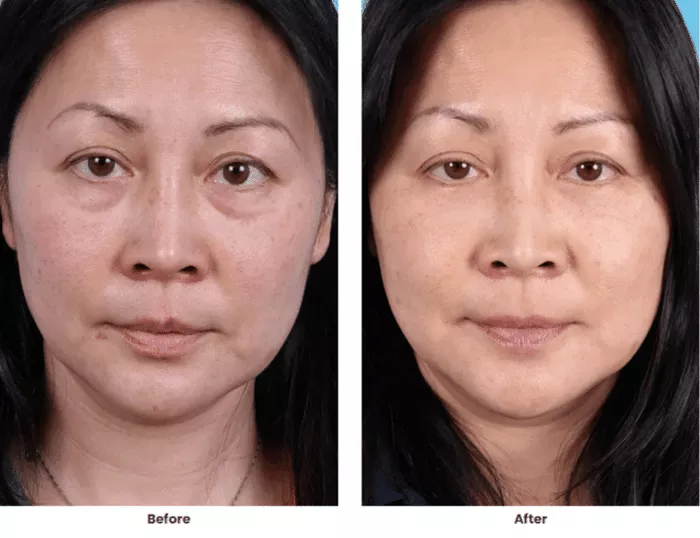Blue circles under the eyes, also known as periorbital dark circles, are a common cosmetic concern that affects many people. They can make you look tired, sick, or older than you actually are. In this article, we will explore the four most common causes of blue circles under the eyes and the treatments that can help reduce their appearance.
What are Blue Circles Under the Eyes?
Blue circles under the eyes are a common cosmetic concern that occurs when the skin under your eyes appears dark or blue. This can create a tired or haggard appearance, even if you are well-rested. Blue circles under the eyes can also be accompanied by puffiness or bags.
The skin around your eyes is delicate and thin, making it more susceptible to damage and aging. The area under your eyes is also prone to fluid retention, which can cause puffiness and bags. Blue circles under the eyes can be temporary or permanent, and can be caused by a variety of factors.
Causes of Blue Circles Under the Eyes
There are several factors that can contribute to the development of blue circles under the eyes. Some of the most common causes include:
Genetics: Blue circles under the eyes can be hereditary. If your parents or other family members have them, you are more likely to develop them as well. Genetics can also play a role in the thickness and elasticity of your skin, which can contribute to the development of blue circles.
Age: As you age, the skin under your eyes becomes thinner and loses elasticity. This can cause blood vessels under the skin to become more visible, creating a blue or dark appearance. Aging can also cause the muscles around your eyes to weaken, which can contribute to the development of blue circles.
Allergies: Allergies can cause inflammation and swelling in the eyes, which can lead to blue circles under the eyes. Allergic reactions can also cause itching and rubbing of the eyes, which can further exacerbate the issue.
Fatigue and Stress: Lack of sleep and high levels of stress can cause the skin under your eyes to appear dull and tired, which can accentuate blue circles. Fatigue and stress can also cause blood vessels under the skin to dilate, creating a blue or dark appearance.
Treatments for Blue Circles Under the Eyes
There are several treatments available for blue circles under the eyes, depending on the severity of the issue. Some of the most effective treatments include:
Topical creams: There are several creams available that can help reduce the appearance of blue circles under the eyes. These creams typically contain ingredients like vitamin K, caffeine, or retinol, which can help improve circulation and reduce inflammation. Vitamin K is a natural blood-clotting agent that can help reduce the appearance of blue circles. Caffeine is a natural vasoconstrictor, which can help reduce puffiness and inflammation. Retinol is a form of vitamin A that can help stimulate collagen production and improve skin elasticity.
Cold compresses: Applying a cold compress to the skin under your eyes can help reduce inflammation and swelling. This can help minimize the appearance of blue circles. Cold compresses can be made by wrapping ice cubes in a towel or using a cold gel eye mask.
Fillers: Injecting fillers like hyaluronic acid or collagen into the skin under your eyes can help plump and smooth the area, reducing the appearance of blue circles. This procedure is minimally invasive and can be performed by a dermatologist or plastic surgeon.
Laser therapy: Laser therapy is a non-invasive procedure that uses a laser to stimulate collagen production and improve skin texture. This can help reduce the appearance of blue circles under the eyes and improve overall skin quality.
Makeup: Using makeup can be an effective way to cover up blue circles under the eyes. Look for products that are specifically designed to cover dark circles, and use a color corrector to neutralize any blue or green tones.
Conclusion
Blue circles under the eyes can be a frustrating cosmetic concern, but there are several treatments available that can help reduce their appearance. By understanding the causes of blue circles under the eyes and making lifestyle changes, you can take steps to minimize their appearance and maintain healthy, youthful-looking skin. If you are concerned about the appearance of blue circles under your eyes, talk to your dermatologist or healthcare provider about the best treatment options for you. With the right treatment plan, you can achieve a more refreshed and youthful appearance.

